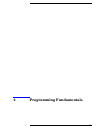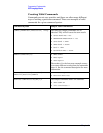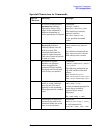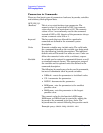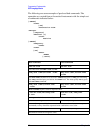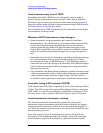
64 Chapter 2
Programming Fundamentals
SCPI Language Basics
Block Program Data
Some parameters consist of a block of data. There are a few standard
types of block data. Arbitrary blocks of program data can also be used.
<trace> Is an array of rational numbers corresponding to
displayed trace data. See FORMat:DATA for
information about available data formats.
A SCPI command often refers to a block of current trace
data with a variable name such as: Trace1, TRACE2, or
trace3, depending on which trace is being accessed.
<arbitrary block data> Consists of a block of data bytes. The first
information sent in the block is an ASCII header
beginning with #. The block is terminated with a
semi-colon. The header can be used to determine how
many bytes are in the data block. There are no units.
For example, suppose the header is #512320.
• The first digit in the header (5) tells you how many
additional digits/bytes there are in the header.
• The 12320 means 12 thousand, 3 hundred, 20 data
bytes follow the header.
• Divide this number of bytes by your current data
format (bytes/data point), either 8 (for real64), or 4
(for real32). For this example, if you’re using real64
then there are 1540 points in the block.
Putting Multiple Commands on the Same Line
Multiple commands can be written on the same line, reducing your code
space requirement. To do this:
• Commands must be separated with a semicolon (;).
• If the commands are in different subsystems, the key word for the
new subsystem must be preceded by a colon (:).
• If the commands are in the same subsystem, the full hierarchy of the
command key words need not be included. The second command can
start at the same key word level as the command that was just
executed.




